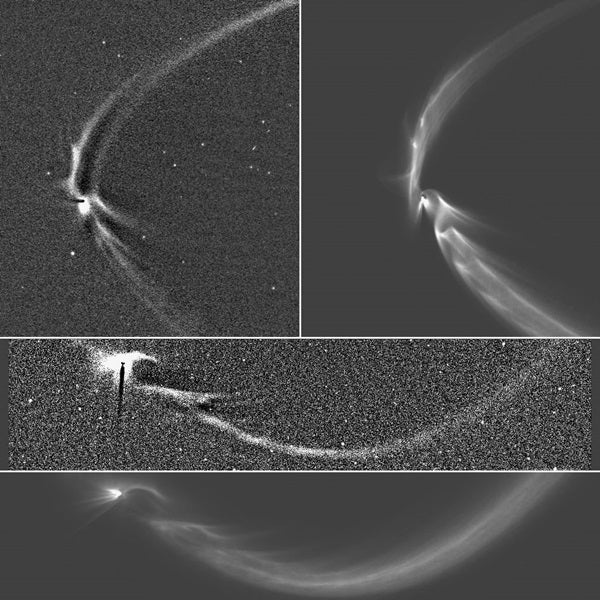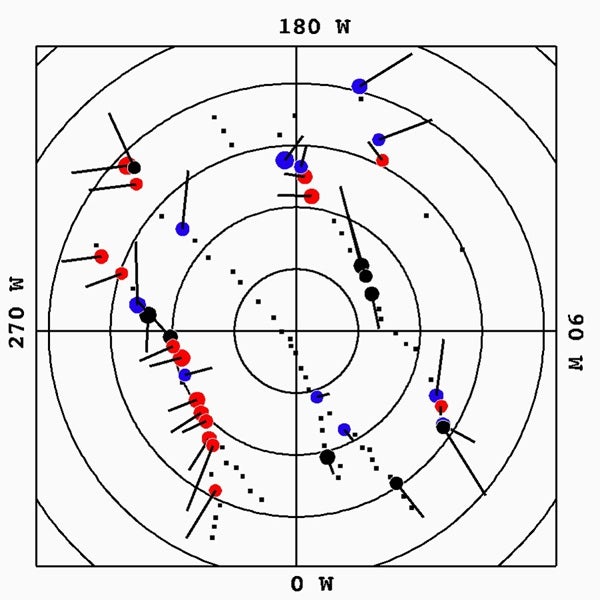“We’ve been able to show that each unique tendril structure can be reproduced by particular sets of geysers on the moon’s surface,” said Colin Mitchell from the Space Science Institute in Boulder, Colorado. Mitchell and colleagues used computer simulations to follow the trajectories of ice grains ejected from individual geysers. The geysers, which were discovered by Cassini in 2005, are jets of tiny water ice particles, water vapor, and simple organic compounds.
Under certain lighting conditions, Cassini’s wide-view images showing icy material erupting from Enceladus reveal faint, finger-like features dubbed “tendrils” by the imaging team. The tendrils reach into Saturn’s E ring — the ring in which Enceladus orbits — extending tens of thousands of miles away from the moon. Since the tendrils were discovered, scientists have thought they were the result of the moon’s geysering activity and the means by which Enceladus supplies material to the E ring. But the ghostly features had never before been traced directly to geysers on the surface.
Because the team was able to show that tendril structures of different shapes correspond to different sizes of geyser particles, the team was able to zero in on the sizes of the particles forming them. They found the tendrils are composed of particles with diameters no smaller than about a hundred-thousandth of an inch, a size consistent with the measurements of E-ring particles made by other Cassini instruments.
The authors suspect that changes in the tendrils’ appearance likely result from the cycle of tidal stresses — squeezing and stretching of the moon as it orbits Saturn — and its control of the widths of fractures from which the geysers erupt. The stronger the tidal stresses raised by Saturn at any point on the fractures, the wider the fracture opening and the greater the eruption of material. The scientists will investigate in future work whether this theory explains the tendrils’ changing appearance.
There is even more that can be extracted from the images, the scientists say. “As the supply lanes for Saturn’s E ring, the tendrils give us a way to ascertain how much mass is leaving Enceladus and making its way into Saturn orbit,” said Carolyn Porco from the Space Science Institute. “So, another important step is to determine how much mass is involved and thus estimate how much longer the moon’s subsurface ocean may last.” An estimate of the lifetime of the ocean is important in understanding the evolution of Enceladus over long timescales.
Because of its significance to the investigation of possible extraterrestrial habitable zones, Enceladus is a major target of investigation for the final years of the Cassini mission. Many observations, including imaging of the plume and tendril features and thermal observations of the surface of its south polar geyser basin, are planned during the next couple of years.











